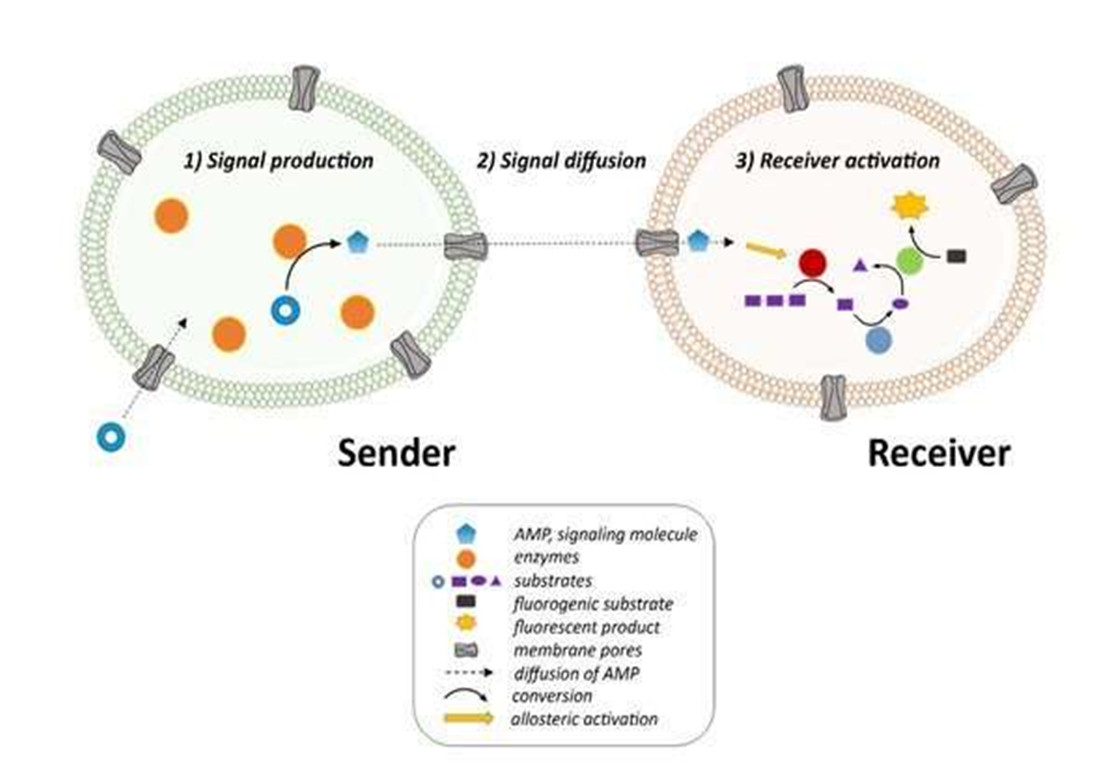
Scientists have big dreams for artificial cells. These replicas of
biological cells in the laboratory could help understand how living
organisms work. While a lot of progress has been made in how to
construct artificial cells, the phenomena behind their communication and
their behavior remain largely unexplored. Researchers from TU/e and
Radboud University have developed communities of artificial cells that
communicate with each other with unprecedented power. Their studies
advance the development of artificial cells that, by being
'interconnected', could be used—to name a few—to deliver drugs more
precisely to their targets, defeat cancer cells, or even improve the
accuracy of diagnostic testing. Results are published today in Nature Communications.
Biological cells utilize a variety of signaling processes to exchange information with each other and to 'sense' their environment. To understand how cells coordinate their behaviors through communication with each other, researchers all over the world have made big strides in 'engineering' cells and in recreating their communication networks in the laboratory. Until very recently, however, the focus has been on the design of artificial cells that function in isolation.
Communities
"Living systems generally do not operate in isolation. Rather, they are often intimately connected as cooperators or competitors", explains Jan Van Hest, professor at the departments of Biomedical Engineering and Chemical Engineering and Chemistry, and director of the Institute for Complex Molecular Systems at TU/e. For this reason, he, together with dr. Bastiaan Buddingh, developed communities of artificial cells rather than individual ones. To build those, they used giant vesicles composed of phospholipids, the major constituents of the outermost layer of animal cells.
Sender and receiver
To study intercellular communication, the researchers developed two communities: one producing a chemical signal ('senders') and another one programmed to perceive the chemical signal ('receivers'). Specifically, senders respond to an external trigger and process this into a signaling molecule that is released. This signaling molecule diffuses through the extracellular environment until it reaches a receiver, which recognizes the chemical signal and activates in response to the information relayed by the sender.
Signal amplification
"Depending on the distance between the senders and receivers, the concentration of signaling molecules may be extremely low upon reaching a receiver", they explain. "Signal amplification is therefore important for the activation of the receivers. We loaded the receivers with a specific enzyme that can process low concentrations of signaling molecules, thereby resulting into an amplification of the signal at the receiver. This facilitates also the propagation of signals over long distances. One day we may create networks where several types of artificial cells with specialized function cooperate in communities, just as it happens in biological tissues."
This study was published on April 3 in Nature Communications under the title "Intercellular Communication between Artificial Cells by Allosteric Amplification of a Molecular Signal."

